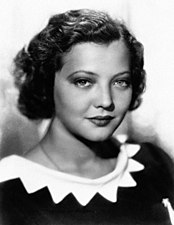Escoffier's Human Design Chart
Design
Design
Personality
Chart Properties
Your Cross represents the specific theme of your life. This cross embodies your unique potential & the lessons you're here to learn, providing a roadmap to fulfilling your life purpose.
We use the UTC birth time and date to do the calculations required to generate your Human Design chart.
Buy Tokens
Pay as you use, no expiry and no subscription required.Escoffier's Biography
French chef, known as “The Emperor of Chefs and The Chef of Emperors.”
Growing up near Nice, with a blacksmith father, Escoffier was a popular and happy child. He showed artistic ability early but the influence of his beloved grandmother, an ardent cook, held sway over his life. He learned early while playing in her kitchen the satisfying quality of good, simple food, well-prepared. When he was 13, his father took him to Nice, where the boy’s uncle had opened a well-respected restaurant, Le Restaurant Francais. The young apprentice worked hard, learning his culinary lessons under the tutelage and strict discipline of his paternal uncle.
In 1865, when he was 19, he won the attention of the owner of Le Petit Moulin Rouge, who invited the young man to come to Paris to work in his famous restaurant. For five years, Escoffier worked in the Paris kitchen but joined the military in 1870 to fight in the Franco-Prussian War. During his military service he studied the technique of canning various kinds of food. Upon his discharge, he returned to the Petit Moulin Rouge where he remained Head Chef until 1878. He then decided to open his own restaurant in Cannes, Le Faisan d’Or (The Golden Pheasant). He was soon after appointed to the management of the Maison Chevet, at the Palais Royal, a prestigious restaurant, and next to La Maison Maire. In 1880, the tiny man who wore built-up shoes, the easier to reach his stoves, married Delphine Daffis, the daughter of a publisher. He and his wife had two sons and a daughter.
In the late 1890s , he met Cesar Ritz, the hotelier, and he became well-known and influential in hotel kitchens. Together the two men organized teams of workers for the luxury hotels of the day as well as ocean liners. Escoffier is attributed with creating many well-known dishes in honor of famous guests, including Peach Melba, for the Australian Singer, Nellie Melba, and Tournedos Rossini for the Italian composer, Gioacchino Rossini.
In 1893, Ritz and Escoffier opened the Hotel Ritz in Paris, a thoroughly modern hotel with electric lights, large bathrooms and an enormous and well-provisioned wine cellar. A year later, they established the Carlton Hotel in London. Two years later, the team of Escoffier and Ritz split up but Escoffier stayed at the Carlton until 1919. During this period he oversaw the establishment of the RitzCarlton Restaurants on a German shipping company’s ocean liners. Even after he left the Carlton in 1919, he continued to work with prestigious hoteliers in support of the development of the Riviera and Monte Carlo. Along the way he captured many awards, including in 1928 the Rosette of an Officer of the Legion by the German Emperor William II. Escoffier wrote several books, his first published in 1886, “Le Traite sur L’art de Travailler les Fleurs en Cire” and “Le Guide Culinaire” (1903) and others.
His wife died in February 1935. A few days later, February 12, 1935, he died as well in his home in Monte Carlo.
Link to Wikipedia biography
Your Cross represents the specific theme of your life. This cross embodies your unique potential & the lessons you're here to learn, providing a roadmap to fulfilling your life purpose.
We use the UTC birth time and date to do the calculations required to generate your Human Design chart.








